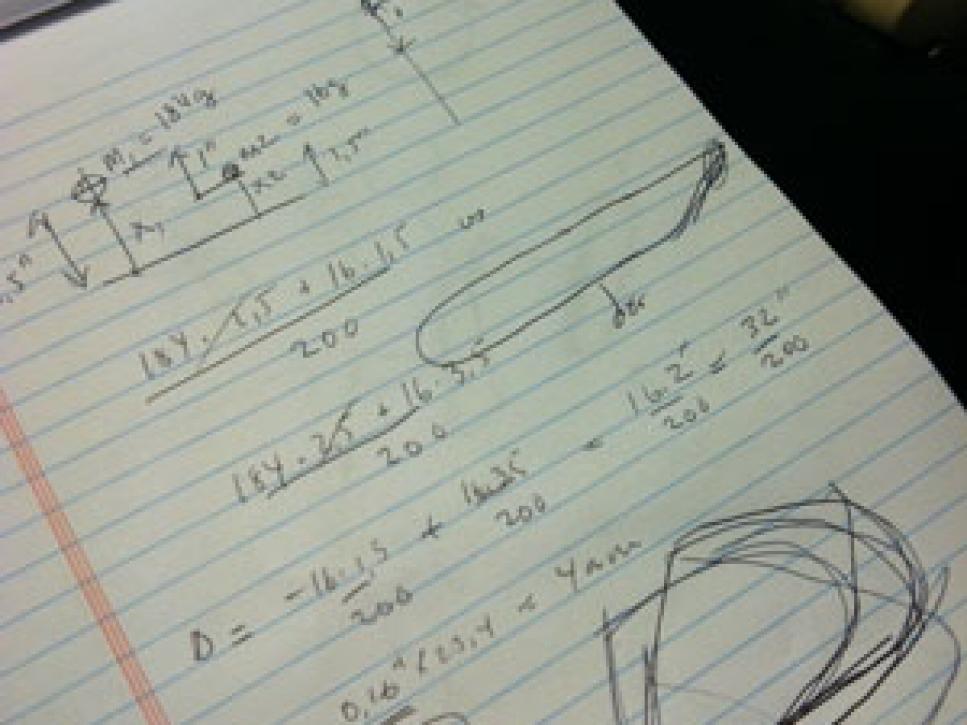News
Reading the handwriting
The handwriting on my notebook is indecipherable, and not just because it is not my own. Martin Broulliette, a professor of mechanical engineering at the University of Sherbrooke in Quebec and a member of the Golf Digest Technical Panel since 2005, is trying to illustrate to me in the simplest terms why an airplane taking off and a fairway wood coming into impact are (ideally) designed in a similar fashion, in particular when it comes to the tail section of each, er, vehicle.
I see what he's saying about the airplane. I understand what he's saying about the fairway wood. But only because Brouillette, like the rest of our panel, is a patient teacher. (It has to do with the concept of dynamic loft or the tendency of a club with a center of gravity well behind the face to add loft just prior to impact as the CG of the club races to catch up and line up with the shaft. Got that?)
In the end, I am encouraged somewhat. The mission of our two days (and nights) of discussions with our panel of scientists is fairly simple: to help us, where possible, to discern the various degrees of excellence between the new technologies we see in the hundreds of new products we consider every year for the Hot List. (This year, we're over 300 individual entries, and we'd easily expect less than a third of those to make it on the Hot List.) It is not simple, but while I am intrigued at Brouillette's scribblings (and the fact that he can outdrive me by 50 yards), he leaves me with a warning.

"We're only talking about a very small effect, maybe one degree," he says. "I doubt you could see how well they account for it just by looking at the bottom of your 3-wood."
Of course, the point of the discussion, of the scribblings, of the questions and answers is to continue to look for those new technology stories that are both imaginative and effective. The entire panel believes they probably could test several dozen hypotheses in this year's crop of entries. They believe some ideas might take an afternoon to prove, but they also confess some might take years.
They are a thorough, classy, whipsmart group, our collection of six Ph.Ds. Brouillette has invented a needleless syringe, but he's also created precise golf ball flight models. Thomas Lacy, a professor of aerospace engineering at Mississippi State, studies aircraft structure durability but also spearheaded a recent Golf Digest study in concert with the MSU Institute of Golf of the effect of cooking spray on driving distance that appeared in our September issue and had nearly every golfer raiding his kitchen cabinets. George Springer, Paul Pigott Professor of Engineering (emeritus) at Stanford, is one of the most significant and influential figures in the history of composite materials research, and the 78-year-old also can be found more often than not enjoying a round of golf at the Stanford Golf Course, pull cart and clubs in tow. John McPhee, is a professor of systems design engineering at the University of Waterloo in Ontario who led a team that __recently invented the first hockey stick-testing robot. __David Lee, is chair of the physics department at Gordon College in Massachusetts and coordinates all our mass property measurements of golf clubs, including moment of inertia, center of gravity locations and characteristic time. John Axe is a semi-retired research physicist, who spent nearly 30 years at the Brookhaven National Laboratory, where he studied condensed matter science and neutron scattering. More importantly, he made every putt that mattered in helping our team win our match yesterday afternoon.
And so our clan of scientists spent the last few days intensely inquisitive, chewing on each new topic and technology until there's nothing left but shards of bone. Today it was much talk of fairway woods and drivers, wedges and grooves and putters and, well, grooves. There was lively debate and often there were technical questions sent to manufacturers for clarification of their positions. We could go on and on about the strength of our panel, but perhaps it's most evident in this simple statement: Of the dozen or so extra questions our group took to the manufacturers, each was promptly answered. This group is respected and it makes us better.
--Mike Stachura